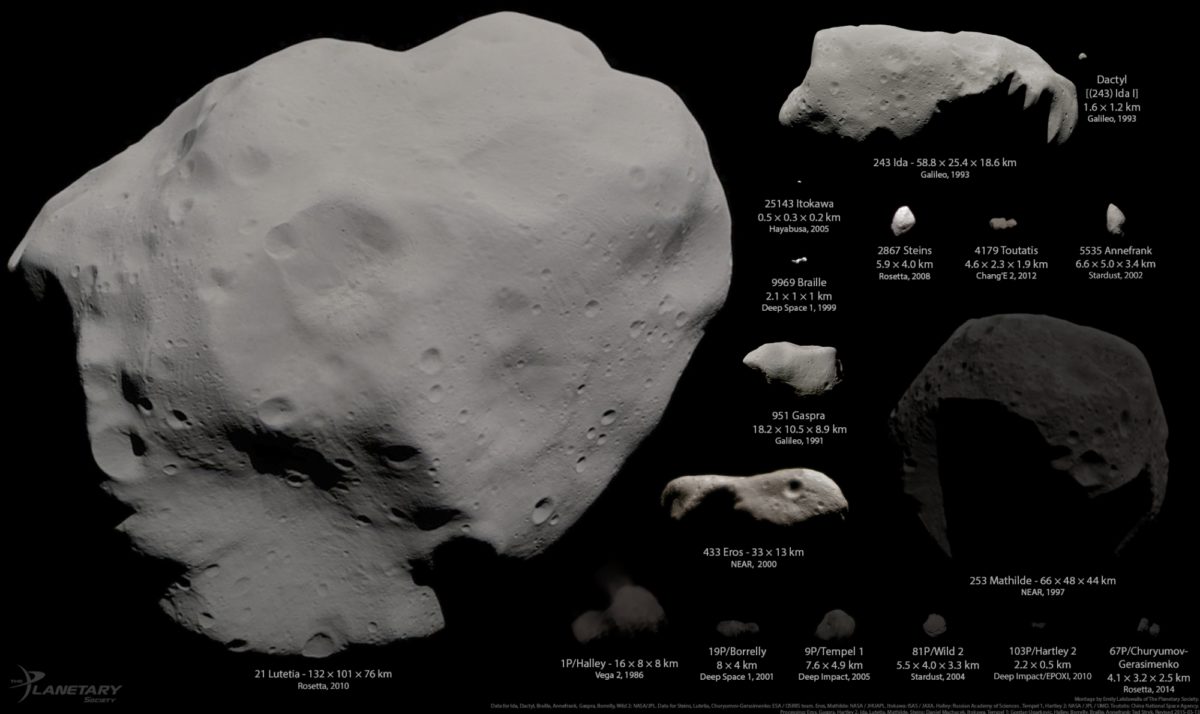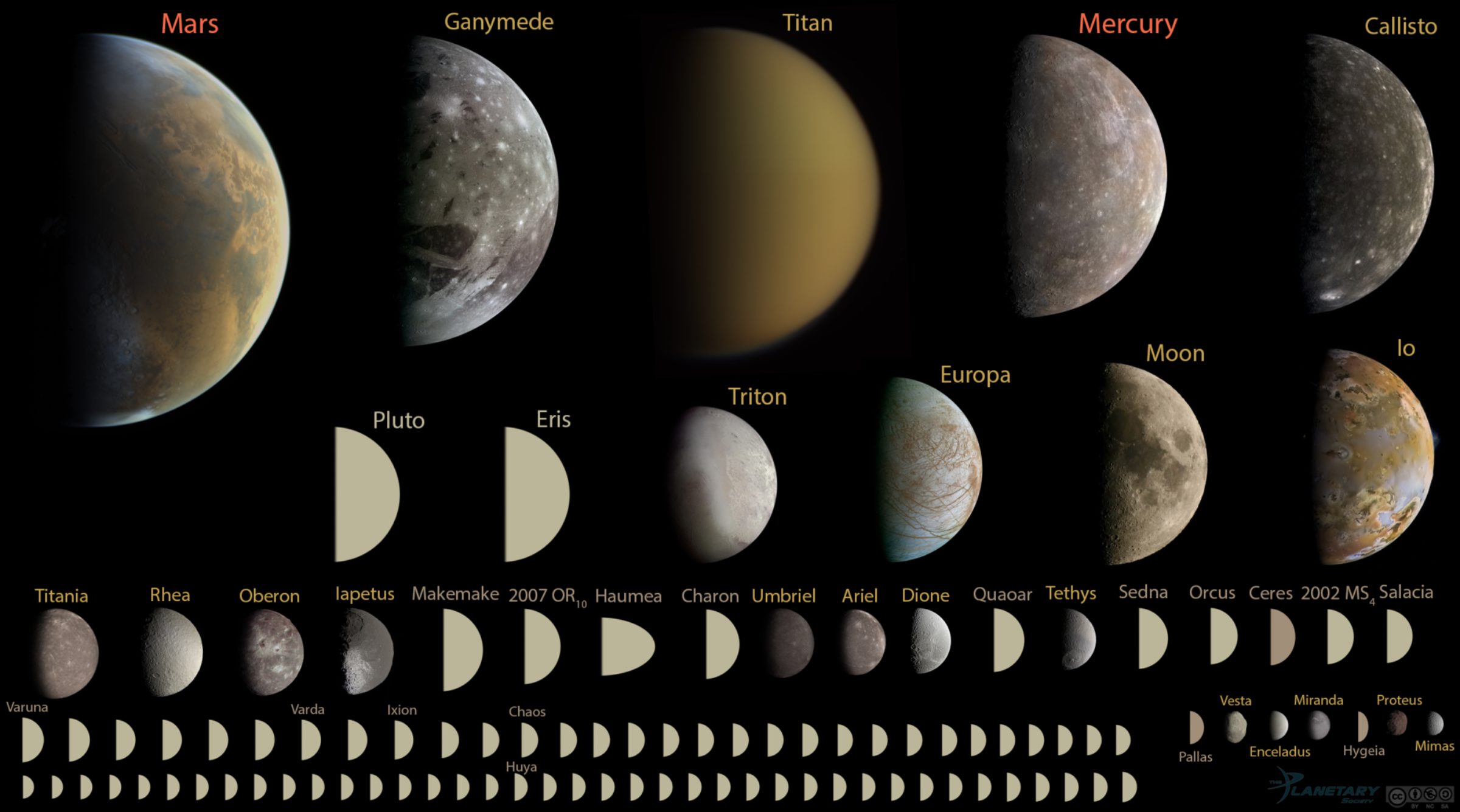Emily Lakdawalla • Mar 13, 2015
Adding Churyumov-Gerasimenko to my scale comparison of comets and asteroids
I'm not sure how I missed this, but last December the Rosetta mission posted a color portrait of comet Churuymov-Gerasimenko. It's possible that I missed it because the comet is incredibly gray, having virtually no color variation anywhere across its surface. I just discovered it today, and that meant that I could add Churyumov-Gerasimenko to my scale comparison of comets and asteroids visited by spacecraft. Which I have now done! Enjoy:

I had to widen the graphic slightly to accommodate the new comet, but that's fine because there are more asteroids to be visited by spacecraft in the next few years; this diagram is going to grow to include 1999 JU3 as seen by Hayabusa2 in 2018 and Bennu as seen by OSIRIS-REx in 2019, not to mention the as-yet-unselected asteroid and Kuiper belt object targets of the PROCYON and New Horizons missions.
Ever since Dawn arrived at Vesta, I've received repeated requests to add Vesta to this diagram, since it's also an asteroid. And now that Dawn is approaching Ceres, I expect I'll get similar requests to add Ceres to it, too. Here is a quick-and-dirty comparison, containing the highest-resolution nearly-full-phase image of Ceres we've seen so far, that shows you why that request is hard to fulfull:
Ceres and Vesta really are not the same class of object as those other things! The images don't compare well to each other, because the best global view of Vesta that I have to hand has a resolution of 250 meters per pixel. At that scale, many of the asteroids that we've visited are just a dozen pixels across, barely discernible; poor Itokawa is just two pixels. It's better to compare Ceres and Vesta to the objects in the solar system that are in their size range: the mid-sized moons of the outer solar system. Later this year, I will be able to produce a graphic that compares the sizes, shapes, and colors of the largest asteroids, the mid-sized moons, and two similar-sized Kuiper belt objects: Pluto and Charon. I can't wait!

Let’s Go Beyond The Horizon
Every success in space exploration is the result of the community of space enthusiasts, like you, who believe it is important. You can help usher in the next great era of space exploration with your gift today.
Donate Today

 Explore Worlds
Explore Worlds Find Life
Find Life Defend Earth
Defend Earth

